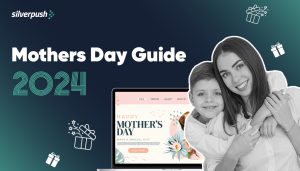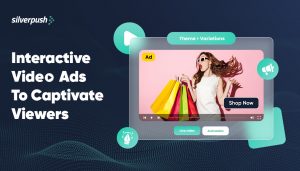A
Ad Agency (aka “Creative Agency)
Ad agencies, also known as creative agencies, are companies that provide services related to creating, planning, and managing advertising campaigns. These agencies may also handle other forms of promotion and marketing for their clients.
Ad Blocking
Ad blocking refers to software and techniques which prevent displaying ads to users through their web browsers. Some of the most common ways to block ads are with the help of browser plugins, such as Ghostery and Adblock Plus, and with the use of “private” or “incognito” modes.
Ad Call (aka “Ad Request”)
An ad call is a signal that is sent by an open ad slot or ad unit from a publisher's owned properties to an ad tech platform. Its purpose is to initiate the process that would eventually lead to an advertiser's ad creative being served to the website.
Ad Exchange
An ad exchange is a technology platform that facilitates the buying and selling of online advertising inventory from multiple ad networks. It operates through an automated auction-based system, where advertisers can bid on available ad impressions in real time.
Ad Group
In online advertising, an ad group refers to a collection of advertisements that share a common set of targeting criteria within a campaign. Ad groups are created based on various factors such as product types, target audiences, and specific targeting methods like demographics or remarketing lists.
Ad Network
An ad network acts as an intermediary between advertisers and publishers in the online advertising ecosystem. It aggregates a large amount of advertising inventory from various publishers' websites or apps and offers it to advertisers. Ad networks enable advertisers to reach a wider audience across multiple websites or apps without having to negotiate individual deals with each publisher.
Ad Serving
Ad serving refers to the process or technology involved in delivering online advertisements to the end users' computers or devices. It is typically handled by an ad server, which is responsible for selecting and delivering the appropriate ads based on targeting criteria. Ad serving allows different ads to be served to different audience groups, ensuring that the right ad is displayed to the right user at the right time. Ad serving also involves tracking and measuring ad impressions, clicks, and other relevant metrics for campaign optimization and analysis.
Ad Tag
An ad tag is a small piece of code that defines the ad space on a website where advertisements are displayed. It is placed within the website's HTML code and contains parameters that describe the advertising inventory available for campaigns to target.
Ad Tracking
Ad tracking refers to the methods used to monitor and record when ads are being viewed by visitors on a website. It involves tracking various metrics such as impressions, clicks, conversions, and other user interactions with the ads.
Advertiser
An advertiser is an individual or organization that manages online advertisements. They are typically responsible for creating, managing, and optimizing ad campaigns to promote their products, services, or brand. Advertisers may work directly with publishers or use ad networks and exchanges to reach their target audience and maximize the impact of their advertising efforts.
Attribution
Attribution refers to the measurement of the value of each user interaction that contributes to a conversion within an advertising campaign. It allows marketers to accurately attribute and assign credit to different marketing channels, touchpoints, or ads that influenced a desired action, such as a purchase or sign-up.
B
Business-To-Business (B2B)
Business-to-business (B2B) refers to the exchange of products or services between two or more businesses. It involves companies selling their goods or services to other businesses rather than directly to consumers. B2B transactions often involve larger quantities, longer-term contracts, and specialized products or services tailored to meet the needs of other businesses.
Business-To-Consumer (B2C)
Business-to-consumer (B2C) refers to the exchange of products or services from a business directly to individual consumers. In a B2C transaction, businesses market and sell their products or services directly to the end-users or consumers who will use or consume them. B2C transactions typically involve smaller quantities, shorter sales cycles, and a focus on meeting the needs and preferences of individual consumers.
Banner Ad
A banner ad is a form of online advertising that uses a graphic display, typically in the form of an image or animated graphic, to promote a company, product, or service. Banner ads are placed on websites or other digital platforms and are designed to attract the attention of users and encourage them to click on the ad to visit the advertiser's website or landing page. Banner ads can include text, images, animations, and even videos to convey the advertising message.
Behavioral Targeting
Behavioral targeting is a marketing tactic that utilizes data on a user's past online behavior, such as browsing history, search queries, or interactions with websites, to deliver targeted advertisements. By analyzing a user's behavior, advertisers can identify their interests, preferences, and purchase intent to serve them relevant ads. Behavioral targeting aims to increase the effectiveness of advertising by reaching users who are more likely to be interested in the advertised products or services based on their demonstrated behavior.
Bounce Rate
Bounce rate refers to the percentage of visitors to a website who leave or "bounce" without interacting further or visiting additional pages on the same site. It indicates the number of users who land on a page and then leave without taking any action or navigating to other parts of the website. A high bounce rate can suggest that visitors are not finding what they are looking for or that the website's content or user experience may need improvement.
Buyer Persona
A buyer persona is a fictional representation of an ideal customer or target audience segment for a business. It is created based on market research, customer data, and insights to capture the characteristics, behaviors, preferences, and needs of the target customers. Buyer personas help businesses better understand their audience, tailor their marketing strategies, and create relevant and personalized messages to effectively engage and convert potential customers.
C
Category
In the context of websites or content organization, a category refers to a descriptive label or classification that groups similar content together. Categories help organize and structure information, making it easier for users to navigate a website and find relevant content. For example, a blog may have categories such as "technology," "fashion," or "travel" to categorize and group related articles or posts.
Click-Through URL
A click-through URL is the website address or destination page that a user is directed to when they click on an advertisement. It is the web page where the advertiser wants the user to land after clicking on the ad. The click-through URL is typically embedded within the ad's code or link.
Conversion
The measure of the number of times that a tracker has been displayed and successfully linked to a previous creative impression or click.
Contextual Targeting
Targeting websites or publishers that categorize themselves in a specific area or topic.
Contextual Keyword Targeting
A targeting tactic that allows advertisers to target URLs based on the keywords that appear within website pages.
Cookieless Targeting
Targeting tactics (such as contextual keyword targeting) that do not rely on cookie-based data.
Cost-Per-Acquisition (CPA)
Uses algorithms to optimize for the cost per action or acquisition. It represents the target amount advertisers are willing to pay to achieve a conversion, such as a purchase, download, form submission, account sign-up, or email sign-up.
Cost-Per-Click (CPC)
Advertisers pay for each user that clicks on the ad. CPC advertising is effective for driving website traffic but may not accurately measure brand awareness. CPC has gained market share over the years, surpassing CPM to become the dominant method of online advertising compensation, accounting for two-thirds of all methods.
Cost-Per-Impression (CPI)
The cost of internet marketing or email advertising campaigns where advertisers pay for each ad display. It represents the expense incurred to reach potential customers who view the advertisements.
Cost-Per-Thousand (CPM)
A marketing term indicating the price of 1,000 ad impressions on a web page. The "M" in CPM is "Mille," derived from the Latin word for 1,000.
Crawler
Also known as a "spider" or "spider bot," a crawler is a program that systematically browses the World Wide Web to index data. In digital marketing, it refers to search engine crawlers that index web pages for search results.
Customer Relationship Management (CRM)
Software that analyzes customer history to improve business relationships.
CRM Onboarding
An automated feature that enables clients to upload a CRM list to the platform, providing Audience Insights and targetable consumer profiles based on CRM data for both desktop and mobile devices.
Cascading Style Sheets (CSS)
A standard language is used to create the layout and appearance of an email or web page. (Also see: HTML and JavaScript)
Call to Action (CTA)
A message that encourages customers to take a specific action.
Click-Through Rate (CTR)
Uses algorithms to optimize for the percentage of users clicking on an ad. It represents the target rate of users advertisers aim to click on their ads and is defined as "the amount spent to get an advertisement clicked."
D
Demographic
The process of categorizing an audience into more specific groups based on characteristics such as gender, age, ethnicity, income level, parental status, etc.
Data Management Platform (DMP)
A data management platform (DMP) is a centralized platform for managing and organizing data, including both first-party and third-party audience data. It enables the creation of target audiences and facilitates accurate campaign targeting across various ad networks and exchanges. Additionally, it provides measurement capabilities to evaluate campaign performance across segments and channels, allowing for the optimization of media buys and ad creative over time.
Demand-Side Platform (DSP)
A demand-side platform (DSP) is a system that enables buyers of digital advertising inventory to efficiently manage multiple ad exchange and data exchange accounts through a single interface. It facilitates real-time bidding for online ad placements within ad exchanges. By utilizing a DSP, marketers can effectively control their bids for ad placements and the pricing for data that is used to target their desired audiences.
Data-Driven Attribution
This is a method of measuring the effectiveness of online advertising campaigns by tracking the path that users take from exposure to an ad to conversion. Data-driven attribution allows advertisers to understand which channels and touchpoints are most effective at driving conversions.
E
eCPM (Effective Cost Per Thousand Impressions)
It is a metric used in online advertising to measure the average cost per thousand impressions of an ad campaign. It calculates the cost incurred for every one thousand impressions, allowing advertisers to compare the efficiency and cost-effectiveness of different campaigns or ad placements.
Enhanced CPC
Enhanced CPC is a bid strategy used in search advertising, particularly in Google Ads. It is a semi-automated bidding method where the CPC (Cost Per Click) bid is adjusted based on the likelihood of a conversion. This strategy helps maximize conversions while still maintaining control over the bids.
Enhanced Conversions
Enhanced conversions is a feature in Google Ads that allows advertisers to send hashed first-party conversion data from their website to Google. This data is used to attribute conversions back to the respective Google Ad campaign, providing better insights into campaign performance and optimization.
Exact Match Keywords
Exact match keywords are a type of keyword matching option used in search advertising campaigns. When using an exact match, an ad will only be triggered when someone searches for the exact keyword or a close variant of it. This helps advertisers ensure their ads are shown to highly relevant audiences, potentially improving the ad's performance.
Expected CTR (Click-Through Rate)
Expected CTR is a keyword status metric within Google Ads. It predicts how often an advertiser's ads will be clicked for a particular keyword compared to other advertisers using Google Ads. It provides insights into the expected performance of a keyword and helps advertisers optimize their keyword selection and bidding strategies.
F
Frame Ad (traditional banner)
Frame ads were one of the earliest forms of web banners. They are commonly referred to as "banner ads" in colloquial usage. Website publishers allocate a specific space on the web page to incorporate frame ads.
Frequency
Frequency refers to the number of times a visitor is shown a particular ad on a website. Ad servers utilize cookies to track the impression count of ads served, ensuring that no ad surpasses a predetermined maximum number of views per person.
Frequency Capping
Frequency capping is a technique that utilizes cookies to monitor the impression count of ads served and prevents a specific ad from being displayed to a single visitor more times than the set limit.
Facebook Ads
Facebook Ads is an online advertising platform designed for displaying ads on Facebook and its associated properties. It provides businesses with a means to reach their target audience through targeted advertising campaigns on the Facebook platform.
G
Graphics Interchange Format (GIF)
A widely used file format for images, supporting both static and animated graphics without loss of quality.
Geo-Targeting
The practice of determining the geographical location of a website visitor to deliver location-specific content or targeted advertisements.
Google Ads
An online advertising platform provided by Google, allowing businesses to display ads on Google's search engine, its related properties, and a network of partner websites and apps.
Google Display Network
A vast online advertising network operated by Google, enabling the distribution of visually appealing advertisements across a wide range of partner websites and applications.
Google Keyword Planner
A tool offered by Google for search advertising, designed to generate keyword suggestions and provide estimates of search traffic volume.
Google Merchant Center
A platform provided by Google for search advertising, facilitating the management and optimization of product data feeds for businesses selling merchandise online.
Google Partners
A program initiated by Google that offers resources and recognition to agencies and third-party entities engaged in managing Google advertising campaigns on behalf of other businesses.
Google Signals
A feature developed by Google that utilizes signed-in user data to enable cross-device reporting and remarketing capabilities, providing valuable insights into user behavior across multiple devices.
H
HyperText Markup Language (HTML)
The standard language used to create a webpage or email. It is used for structuring and presenting content on the internet.
HTML5
A version of HTML that introduced new features and capabilities, including support for animations, multimedia, and interactive elements. It allows for more dynamic and engaging web content.
House Ad
A self-promotional advertisement that a company runs on its website or network. It is typically used to fill unsold ad inventory and promote the company's products, services, or events.
HTML Banner
A type of banner advertisement created using HTML elements. It may include interactive forms, animations, and other dynamic elements instead of, or in addition to, standard graphical elements. HTML banners allow for more engaging and interactive advertising experiences.
I
Interactive Advertising Bureau (IAB)
The Interactive Advertising Bureau (IAB) is a standards bureau that evaluates and recommends standards and practices for interactive advertising. The IAB issues compliance seals that verify that companies are compliant with IAB standards and guidelines.
Impressions
An impression is the display of an ad to a user while viewing a web page. A single web page may contain multiple ads. In such cases, a single page view would result in one impression for each ad displayed.
Inventory
The total number of ad views or impressions that a website has to sell over a given period (usually, inventory is figured by the month).
IP Address Targeting
Also known as IP targeting, the process of targeting internet advertising to specific households based on their Internet Protocol address (which is the string of numbers assigned to your internet connection by your Internet Service Provider).
J
Javascript
A versatile programming language widely utilized for building dynamic and interactive features on web browsers. (Also see: CSS and HTML)
K
Key Performance Indicator (KPI)
Key Performance metrics are quantifiable measures used to assess the achievement of an organization or the effectiveness of a particular undertaking.
L
Lifestyle
Market segmentation of website traffic or CRM data that provides analytics on trends in online and offline interests, hobbies, affiliations, preferences, and values.
Lookalike Audience
Lookalike audiences allow advertisers to target more people who resemble their established customers. It uses existing custom audiences or conversion data (conversion pixels) as a "seed" to build an audience of similar users. It can be used for targeting people who share characteristics with existing customers for acquisition, site registration, purchases, coupon claims, or to increase brand awareness.
M
Manual Bidding
An advertising bid strategy where you explicitly set a maximum cost-per-click, determining the highest amount you're willing to pay for each click on your ad.
Media Kit
A resource created by a publisher to help prospective ad buyers evaluate advertising opportunities. It provides information about the publisher's audience demographics, advertising options, pricing, and other relevant details.
MOFU (Middle of Funnel):
The middle stage in a buyer's journey is characterized by increased interest and consideration. At this stage, potential customers have moved beyond the initial awareness stage and are actively considering different options before making a purchase decision.
N
Native Advertising
Ads that adapt their appearance based on the website or platform they appear on, aiming to blend in with the surrounding content. Native ads are designed to provide a seamless user experience by aligning with the visual and functional aspects of the platform.
Negative Keywords
Keywords that prevent ads from appearing for search queries that contain them. By specifying negative keywords, advertisers can exclude irrelevant searches and focus their ads on more relevant and targeted audiences.
O
Offline Conversion Tracking
The process of attributing conversion actions that occur outside of a website or app back to online campaigns. It involves tracking and importing data on conversions that happen offline, such as in-store purchases or phone inquiries, and linking them to the online marketing efforts that led to those conversions.
P
Pay-per-click (PPC)
Pay-Per-Click is an internet advertising model used to direct traffic to websites, in which advertisers pay the publisher (typically a website owner) when the ad is clicked.
Potential Reach
Utilizes algorithms to optimize for a maximum impression reach and provides the estimated number of users that can be reached with the selected targeting criteria.
Programmatic Advertising
This is a form of online advertising that uses software to automate the buying and selling of ad space. Programmatic advertising allows advertisers to target their ads more precisely and efficiently.
Publisher
The individual or entity that owns or hosts a website.
Purchase Behavior
Market segmentation of website traffic or CRM data that provides analytics on interest-to-buy, intent-to-buy, and post-purchase trends in online and offline purchases, including insights on why they purchase and where.
Q
Quality Score
In Google Ads, a diagnostic score indicates the relevance of your ad and landing page for a given keyword, relative to other advertisers.
R
Redirect
The act of sending a user from one URL to another.
Retargeting
Also known as "remarketing," retargeting is a form of online advertising that allows advertisers to display their ads to users who have previously visited their website. Retargeting uses cookies to identify these users and target them with relevant ads.
Return on Investment (ROI)
Return on investment is a measure of the success of an ad or campaign in terms of the returns (generally sales revenue) generated relative to the money invested.
Real-Time Bidding (RTB)
Real-time bidding refers to the process of buying and selling ad inventory on a per-impression basis through programmatic or instantaneous auctions. RTB mimics stock exchanges and uses algorithms to automatically buy and sell ads in real-time, based on demographic and behavioral data, increasing the effectiveness of display advertising.
S
Software as a Service (SaaS)
Refers to software that is licensed on a subscription basis, typically paid for regularly rather than a one-time fee.
Search Engine Marketing (SEM)
Marketing activities aimed at generating website traffic from search engines, including efforts in search engine optimization (SEO) and PPC advertising.
Search Engine Optimization (SEO)
The process of optimizing website content to improve its visibility in unpaid search engine results.
Search Engine Results Page (SERP)
Displays relevant results for a searched word, question, or phrase on a search engine.
Supply-Side Platform (SSP)
A technology platform that enables publishers to manage their advertising impression inventory and maximize revenue from digital media. SSPs offer an automated and secure way for publishers to tap into various sources of advertising income and gain insight into different revenue streams and audiences.
T
Target Audience
The specific group of people or demographic that a publication, advertisement, or other message is intended to reach.
U
User Interface (UI)
The visual part of a web page, application, or operating system through which a user interacts with the software. UI specialists design the visual looks, while front-end developers or engineers are responsible for implementing and operating the interface.
User Experience (UX)
The overall experience of a person using a website or product encompasses factors such as ease of use, design, branding, and functionality.
V
Video Completion Rate (VCR)
VCR is a widely used Key Performance Indicator (KPI) for video campaigns, represented as a percentage. It is calculated by dividing the number of views where the entire video was watched or met a minimum required duration by the number of consumers exposed to the video. The minimum duration required for a view to be considered complete may vary.
Viewable Advertising
Viewable advertising measures whether an advertisement was actually visible to a human viewer, as opposed to being outside of the visible area or displayed due to automated activity. It also includes the duration for which the ad was visible and viewed by a consumer. The industry standard typically considers an ad viewable if at least 50% of its pixels are displayed within the browser space for a minimum of 1 second (often 2 seconds for video ads).
W
Win Rate
The measure of the number of impressions won out of those that were bid on.
Walled Gardens
Walled gardens refer to closed or black-box online ecosystems wherein advertisers face limited access to customer data and reduced control over measuring success. Prominent examples of walled gardens include Facebook, Google, and Amazon.
X
Y
Yield
The percentage of clicks is relative to impressions on an ad within a specific page.














